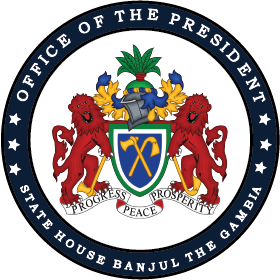OBJECTIVE
To create a society that sees itself as an integral part of nature recognizes different life forms, sustainably uses natural resources and maintains for posterity a nurturing and dynamic world rich in biodiversity.
CONTENT
The Biodiversity Strategy and Action Plan consists of the following Strategic Goals and Target;
- Strategic Goal A: Address the underlying causes of biodiversity loss by mainstreaming biodiversity across Government and society
- Strategic Goal B: Reduce the direct pressures on biodiversity and promote sustainable use
- Strategic Goal C: To improve the status of biodiversity by safeguarding ecosystems, species and genetic diversity
- Strategic Goal D: Enhance the benefits to all from biodiversity and ecosystem services
- Strategic Goal E: Enhance implementation through participatory planning, knowledge management and capacity building.
- Target 1: By 2020, at the latest, 50% of The Gambia’s populations are aware of the values of biodiversity and the steps they can take to conserve and use it sustainably;
- Target 2: By 2020, biodiversity values are integrated 100% into national and local development and poverty reduction planning processes and national accounts;
- Target 3: By 2020, all forms of pollution from water and land-based activities are brought to levels;
that are non-detrimental to ecosystem functions; - Target 4: By 2020, 50 % Governments, business and stakeholders have plans for sustainable production and consumption and keep the impacts of resource use within safe ecological limits;
- Target 5 By 2020, the rate of biodiversity loss, including forest fragmentation and land degradation is considerably reduced by 50%;
- Target 6: By 2020, 60% of areas that are suitable for spawning and nursery grounds are protected, while the use of wrong fishing gears reduced by 40%;
- Target 7: By 2020, 50% of areas under agriculture, aquaculture and forestry are managed sustainably, ensuring conservation of biodiversity;
- Target 8: By 2020, 50% of pollution, including waste and agro and industrial chemical has been brought to levels that are not detrimental to ecosystem function;
- Target 9: By 2020, reduced occurrence and prevent introduction of invasive species by 50%;
- Target 10: By 2020, Maintain integrity and functioning of vulnerable ecosystems impacted by climate change minimized at least 20%;
- Target 11: By 2020, at least 5% of terrestrial and inland water, and 10% of coastal and marine areas are conserved through systems of protected areas;
- Target 12: By 2020, 35% of known threatened and rare species have been prevented from extinction and 50% extinct species reintroduced or restocked;
- Target 13: By 2020, 35% of the genetic diversity of cultivated plants, farmed and domesticated animals and of wild relatives is maintained;
- Target 14: By 2020, poverty would be reduced by 10% of protected area dependent communities to reduce pressure on natural resources significantly;
- Target 15: By 2020, ecosystem resilience and the contribution of biodiversity to carbon stocks has been enhanced, through conservation and restoration, including restoration of at least 50 per cent of degraded ecosystems;
- Target 16: By 2020, the Nagoya Protocol on Access and Benefits Sharing is in force and operational;
- Target 17: By 2016 The Gambia would have adopted as a policy instrument, and has commenced implementing an effective, participatory and updated NBSAP;
- Target 18: By 2020, the traditional knowledge, innovations and practices of indigenous and local communities and their customary use, are respected;
- Target 19: By 2020, knowledge, the science base and technologies relating to biodiversity, its values, functioning, status and trends, and the understanding of consequences of its loss, are improved, widely shared and transferred, and applied; and
- Target 20: By 2020, the mobilization of financial resources for effectively implementing the Strategic Plan for Biodiversity 2011-2020 from all sources, should increase substantially by 35%.
Strategy
-
7.79 MB
Strategy
Published: 13/12/2021
Sectors
-
Ministry of Public Service
7 documents -
Office of The Vice President
3 documents -
Ministry of Agriculture, Livestock and Food Security
8 documents -
Ministry of Basic and Secondary Education
2 documents -
Ministry of Defence
3 documents -
Ministry of Environment, Climate Change and Natural Resources
9 documents -
Ministry of Finance and Economic Affairs
11 documents -
Ministry of Foreign Affairs and International Cooperation
2 documents -
Ministry of Health
30 documents -
Ministry of Higher Education, Research, Science and Technology
3 documents -
Ministry of Communications and Digital Economy
24 documents -
Ministry of Interior
3 documents -
Ministry of Justice
1 document -
Ministry of Petroleum and Energy
5 documents -
Ministry of Trade Industry and Employment
8 documents -
Ministry of Transport Works and Infrastructure
3 documents -
Ministry of Tourism and Culture
3 documents -
Ministry of Women, Children and Social Welfare
12 documents -
Ministry of Youths and Sports
2 documents -
Ministry of Land and Regional Government
1 document -
Ministry of Fisheries and Water Resources
3 documents -
Office of The President
0 documents

